Oculus Rift Virtual Reality gaming system most talked about once more at CES
The 2014 edition of the International Consumer Electronic Show (CES), the world’s largest consumer electronics event, wrapped up recently in Las Vegas, USA. And the product that created the most buzz, once again, was the Oculus Rift virtual reality (VR) gaming system, which, in its newest ‘Crystal Cove’ incarnation, included features such as an updated OLED display and an external camera, all of which have gone a long way towards enhancing user interaction within the user’s VR environment, as well as reducing motion blurring. Also showcased were some prototype games for the system including EVE:Valkyrie,which will be the system’s launch title. While the gaming system, just like in 2013, has yet to announce its official launch date, there is media speculation that this date is getting very close since reviewers have begun commenting that this system almost ready.
However, while bowling over most of the media personnel reporting from CES 2014, the Oculus Rift was by no means the only product phenomenon to come out of this event, which is incidentally the venue for most of the international consumer electronics giants to field test hype-worthy prototypes. Other highly ‘buzzed’, or talked about products included, in no specific order, Razer’s ‘Project Christine’, the Sony 4K Ultra Short Throw Projector, the Pebble Steel Smartwatch, 105-inch curved 4K TVs, Valve’s first generation of Steam Machines gaming consoles, the Mophie Space Pack, the NVIDIA Tegra K1 chipset and the ZTE Eco Mobius modular concept phone.
Razer’s ‘Project Christine’
A modular, easily upgradable computer, this still unfinished concept by gaming hardware specialist Razer allows users to customise their computers to meet any gaming needs, simplifying the experience as much as possible via a tall modular design that can incorporate a large number of interchangeable units. In turn, these interchangeable modules will comprise graphics cards, memory, hard disks and even different parts of the motherboard, so these can be fitted into the frame as and when required, to achieve a number of gaming configurations, etc.
Sony 4K Ultra Short Throw Projector
Beaming 4K images of 66 inches to 147 inches from just 20 inches away, Sony’s new projector also incorporates a home entertainment system that contains two separate speakers, creating an immersive viewing and listening experience. It also projects 3D imagery. However, its price is not for the faint of heart, expected to cost upwards of US$ 40,000.
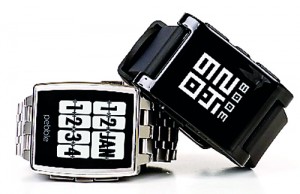 Pebble Steel Smartwatch
Pebble Steel Smartwatch
Expanding on last year’s offering with a more high-end look and feel, with brushed steel or leather watchbands and a Gorilla Glass-encased display, the Pebble Steel was the top pick in terms of smart wearables, especially since its maker is expected to soon launch its own app store.
105-inch curved 4K TVs
Both Samsung and LG revealed 105-inch 4K TVs at CES 2014, with Samsung also issuing an 85-inch bendable prototype, which can go from curved to flat, and back again. These screens, like IMAX screens, are touted as being more immersive in terms of viewing experience.
Valve’s Steam Machine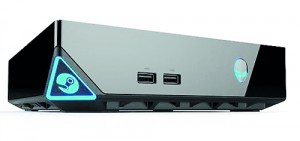
Already having partnered with 14 companies to build its Steam Machine, Valve will now have to leverage its 65 million online gamers into buyers for its new game console, which may take as much as a year to hit the retail space. But it is up against both Sony and Xbox, which is a hard sell.
Mophie Space Pack
An all-in-one iPhone accessory, the Mophie Space Pack offers a battery extender as well as 16 GB or 32GB of extra storage, without sacrificing the phone’s dimensions in any significant way, making it a great accessory for iPhone lovers.
NVIDIA Tegra K1
Soon to be available in both 32-bit and 64-bit versions, the Tegra K1 is the fifth-generation of NVIDIA’s Tegra line of mobile processors. But it is the company’s first mobile SoC (System on Chip) to support next-generation graphics capabilities. Touted to be more powerful than the Playstation 3 and the Xbox 360 in terms of graphics, the chipset contains 192 Kepler graphics cores in its GeForce graphics cards as well as NVIDIA’s Tesla supercomputer accelerators. Its main contender is Qualcomm’s Snapdragon 800
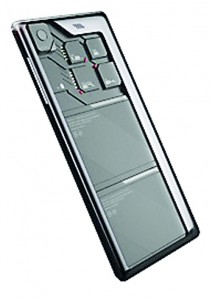 ZTE Eco Mobius
ZTE Eco Mobius
This ZTE smartphone bucks the trend of bigger is better, or even the preference for miniaturised, all-encompassing devices. It does this by allowing users to replace hardware as and when needed, adding a camera with a higher amount of mega-pixels for betterphotography, or swapping out the CPU for a faster chipset and even adding more RAM or ROM when storage is key. This follows in the steps of previously launched concepts such as Phonebloks and Motorola’s Project Ara.
Other notable products at this year’s CES included a wide array of new products related to categories as diverse as smart devices (phones, tablets, phablets, etc.), displays, cameras, gaming, cars, homes, etc. So much so that one reviewer opined that this was the most jam-packed CES event, in terms of new product launches, in several years.
Displays
While a lot was launched in terms of televisions and other types of displays at CES 2014, including a number of innovative products from Samsung and Sony, it was Vizio that finally made the 4K TVs affordable, with its $ 999.99 price tag. Australian company Kogan, that introduced its first 4K TV at around $ 890, also mirrored this low price strategy. Additionally, Kogan also debuted the Agora HD Mini 3G, a 7.85-inch tablet with a 3G modem, retailing at around $ 180, which is low price for consumers.
Smart devices
The range of smart devices unveiled at CES 2014 were too numerous to mention, but the talk of the event appeared to zero in on the Sony Xperia Z1 compact phone, which was considered by many to be comparable to the iPhone 5S in terms of features, while also being water proof to boot, which the iPhone most definitely is not. However, Sony has a hard slog ahead, with many others already having been disappointed trying to overthrow the iPhone. Meanwhile, global phone and smart phone market leader Samsung also showed off its Galaxy Note Pro 12.2-inch phablet at CES, betting on the bigger is better premise. And was joined in terms of phablet launches by the Huawei Ascend Mate 2 4G, the Asus ZenFone 6, and the ZTE Iconic.
Cameras
One interesting spectacle at CES 2014 was undoubtedly the Panono panoramic ball camera, which uses 36 cameras to take panoramic photos, when the product is tossed into the air. This product joined innovations such as those that comprised attachments to iPhones to improve camera functionality and also Polaroid’s newest Socialmatic offering.
Gaming
Beside the much-hyped Steam Machine, there were also gaming functionalities put forward by well-respected companies such as AMD and others, including an Android OS-based gaming system from Huawei called, ironically, Tron. However, one of the products debuted, which although not as prolific as the Oculus Rift, but worthwhile nonetheless, was the Leap Motion, which allows users to control computers with gestures. While yet more tech, TheEyeTribe this time, demonstrated an user’s ability to play games with just their eyes.
Cars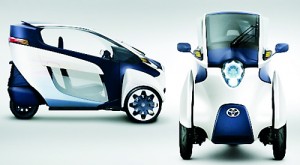
While most of the offerings in this area fell under the scope of connected cars, merging tablets, etc. to on-board car computers, it was BMW, Valeo, and Bosch that significantly added to this field by demonstrating various automated parking features, including a demo of a car self-parking. However, Audi took things much farther by showcasing a traffic assist option, which enabled cars to not only chart a course through traffic, but also self-drive on highways at fairly low speeds. Additionally, Toyota showed off its i-Road concept car at CES 2014. This car is a whole new compact, driving experience, featuring an all-electric motor, with a mileage of about 40km, as well as the cornering capability of a motorcycle. And, most vital of all, it plans to launch in Europe and Asia.
Another transportation device, which does not really fall into the car category, was the URB-E personal transport. Fast and lightweight, with a 32km range on a full battery charge, this product loosely resembles a motor scooter and is available at a price tag of around $1,200.
Wearables
Beyond the Pebble Steel, CES 2014 featured an incomparable range of wearables, from bracelets that monitored vital functions for fitness and health, to those used in more frivolous pursuits, such as sending out messages of love, to even cameras set to record user experiences on a 24-hour basis. Two notable products in this vast, and growing, category were the Muse brainwave sensing headband and Vuzix Smart Glasses. The former is a headband that monitors brain functions to help people track stress levels and other activity to improve their quality of life. However, according to the maker, Muse will also soon be able to allow people to control appliances in their homes, and it has already demonstrated its ability to be used in accomplishing basic tasks such as pouring beverages. On the other, the Vuzix Smart Glasses offers heads up display (HUD) type functionality by adding a tiny micro display to glasses that replicates a smartphone’s functions.
Home
One of the most talked about categories at this year’s CES was the connected home, with a number of gadgets released for this section. In fact, heavyweight Samsung launched a number of connected home appliances as part of its Chef Collection range that included refrigerators, microwaves, and dishwashers, with the latter also utilising a less wasteful linear water wall washing function instead of a jet to clean dishes.
At the same time, a number of smart home appliances, which could interact with smart phones, were also showcased, such as smart locks, which locks and unlocks house doors remotely; smart cookers; smart sprinklers; and even smart baby cribs/rockers. Also unveiled was Panasonic Nanoe hairdryer, which maintains some moisture in hair as it dries it, to help with damaged hair.
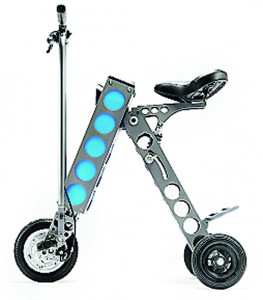 At the same time, also featured were other novel products like the Nest digital thermometer system, that allows users to control the temperature of their home remotely. Along with the Haier Tianzun smart air conditioner, which is interesting in that its design is very different to the typical air conditioners produced to date.
At the same time, also featured were other novel products like the Nest digital thermometer system, that allows users to control the temperature of their home remotely. Along with the Haier Tianzun smart air conditioner, which is interesting in that its design is very different to the typical air conditioners produced to date.
Other
There was a also number of gadgets at CES 2014 that did not easily fit into any one category. These included the 3Doodler, a device that allows users to create physical objects using coloured plastic material; the BitPay, the first ATM system for internet currency BitCoin; and the Meta Pro, a real time device that allows users to interact with objects in a virtual environment, enabling them to, amongst other things, sculpt items and print them out using 3D printers.


